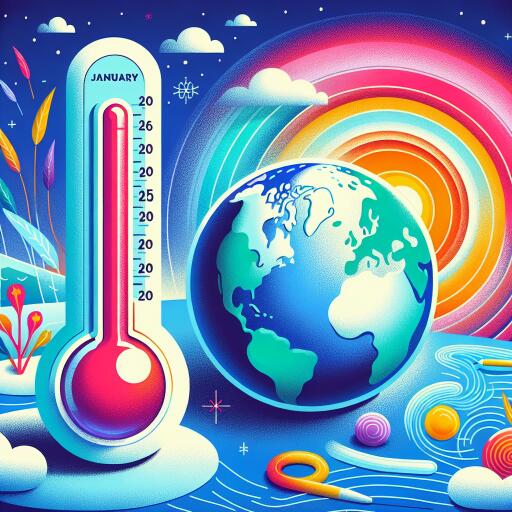
January 2025: Breaking Temperature Records Despite La Niña’s Cooling Influence
In a surprising turn of events, January 2025 has emerged as the warmest January recorded in history, notwithstanding the influence of La Niña—a weather pattern typically associated with cooling effects. This alarming development comes closely on the heels of 2024, which was recognized as the hottest year on record. That year was particularly significant as it marked the first instance where global average temperatures rose 1.5 degrees Celsius above pre-industrial levels.
As per the reports from the European climate monitoring organization, despite the usual trend of cooling associated with La Niña, the month of January saw an average global temperature of 13.23 degrees Celsius. This figure surpasses the previous record-holder, January 2024, by a margin of 0.09 degrees Celsius and stands 0.79 degrees above the 1991-2020 average.
Further analysis determined that the Earth’s temperature in January was 1.75 degrees Celsius above pre-industrial levels. Notably, global temperatures have remained over the critical 1.5-degree mark for an alarming 18 of the last 19 months. A climate expert from the monitoring agency noted, “January 2025 continues the trend of record-breaking temperatures we’ve been observing over the past two years, despite La Niña conditions evolving in the tropical Pacific, which usually brings about temporary cooling in global temperature trends.”
La Niña generally results in cooler-than-normal sea surface temperatures in the central Pacific Ocean, influencing global weather patterns. Typically, it tends to cause increased monsoon activity and heavier than usual rainfall in India while precipitating drought conditions in certain regions of Africa and South America. Contrarily, El Niño, its climatic opposite, tends to warm global temperatures.
In addition to terrestrial temperature increases, oceanic conditions presented similar anomalies. Sea surface temperatures (SSTs) have remained conspicuously elevated across several global regions. The average SST in January, covering the breadth from 60° South to 60° North, registered at 20.78 degrees Celsius, distinguishing it as the second warmest January in recorded history. While La Niña’s presence was evident in the central Pacific, persistently warm ocean temperatures in the eastern Pacific suggested a potential deceleration or halt in the transition towards La Niña.
The Arctic region also presented troubling statistics, with sea ice reaching its lowest recorded extent for the month of January. The reduction measured around 6 percent below the average, coming close to matching the record low ice extent observed back in January 2018.
In January, the World Meteorological Organization officially declared 2024 as the warmest year on record, highlighting a global mean temperature increase of 1.55 degrees Celsius compared to the 1850-1900 baseline. This baseline serves as a benchmark for the period before the widespread human-driven changes to the climate, primarily through the combustion of fossil fuels. It’s crucial to note, however, that a sustained breach of the 1.5-degree Celsius limit outlined in the Paris Agreement refers to a long-term average increase assessed over a 20 to 30-year period.
These developments underscore the complex interplay between natural climate patterns and anthropogenic impacts, emphasizing the urgent need for strategized global responses to mitigate climate change and its burgeoning impacts. The stark thermal deviations observed in January 2025 add yet another layer to the ongoing call for immediate and sustained action towards achieving climate equilibrium.





Leave a Reply